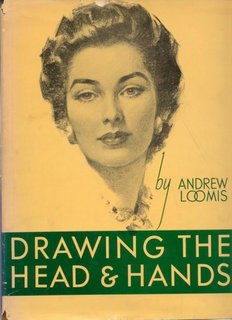‘Drawing The Head And Hands’ PDF Quick download link is given at the bottom of this article. You can see the PDF demo, size of the PDF, page numbers, and direct download Free PDF of ‘Drawing The Head And Hands’ using the download button.
Drawing The Head And Hands Pdf Free Download

Drawing The Head And Hands
the forehead. Perhaps we have always thought of the head so much in terms of belonging to a definite individual that we have never considered it in a mechanical sense.
It perhaps never occurs to us that a smile is a mechanical principle in action, as well as evidence of a bearing personality. Actually, the mechanics involved in a smile are the same as those used in a drawstring on a curtain.
The string is attached to something fixed at one end, and to the material at the other. Pulling the string buckles the material. The cheek plumps out in the same way.
The working of the jaw is like a hinge or a derrick, but the hinge is of the ball-and-socket type. The eyes roll in their sockets like a ball bearing held in place.
The eyelids and the lips are like slits in a rubber ball, which naturally close except when they have been pulled apart. There is a mechanical principle beneath every expression put into action by the brain.
Underlying the flesh of the face are muscles that are capable of expansion and contraction, just like all the other muscles of the body. We discuss this interesting material in more detail later.
We start drawing the head by establishing points on the ball and on the facial plane. Both the ball and the facial plane must be subdivided in order to establish those points.
No matter how much you draw, how skilled you get to be, how well trained your eye becomes you will always have to begin by building the head correctly. just as a carpenter, no matter how long he has.
the chances arc that we will do just the wrong thing.
Instead of moving an eye into its socket, m trim down a check; if a (aw line is out, we add more forehead. We should know, in first laying in the outline, that the whole head is in construction.
This I am sure vou can learn from the pages that follow,
The big difference between the completely amateur attempt and the well-grounded approach is that the beginner starts by setting eyes, cars, noses, and mouths into blank white space, surrounded by some sort of an outline for the face.
This is drawing in the two dimen* sions of height and width only.
We must somehow get into the third dimension of thickness, which means that wc must draw the whole head as it exists in space and build the face upon it By doing so we are able not only to place the features, hut also to establish the planes of light and shadow, and, further, to identify the humps, humps, and creases as being caused by the underlying structure of muscle, bone.
and fat* To help the beginner to start out with this third dimension, many approaches are suggested by various teachers. Some use an egg shape; others a cul>c or block.
Some even start with one feature and start building the form out around it until the whole head is encompassed. However, all these involve many chances for error.
Only the front view of the head looks Kkc an egg, and even that gives no line of the jawbone.
In profile the head is not like an egg. As for the cube, there is no accurate way of setting the head into it.
The head is totally unlike a cube from any angle.
The only value the cube has in drawing heads is to help set the construction lines into perspective* as you will cam later.
he jawbone and features to it- Some years ago I hit upon this plan and made it the basis of my first book. Fun with a Pencil.
I am happy to say that the plan was received with great enthusiasm and is now widely used in schools and by professional artists.
Any direct and efficient approach must presuppose the skull and its parts and its points of division.
It is just as reasonable to start drawing a wheel with a square as it is to start drawing a head with a cube.
By cutting off corners and further trimming the square you could eventually come out with a fairly good wheel.
You could also chip away the cube until you had a head. But at best it’s a long way around.
Why not start with the circle or ball? If you can’t draw a ball, use a coin or a compass.
The sculptor starts with a form of the general shape of the face attached to the ball of the cranium. He could not do otherwise
| Writer | Andrew Loomis |
| Language | English |
| Pages | 141 |
| Pdf Size | 36.13 MB |
| Category | Art |
Drawing The Head And Hands Pdf Free Download
